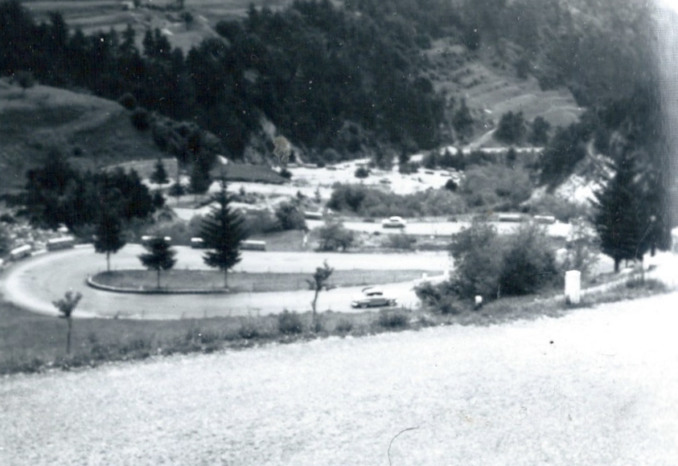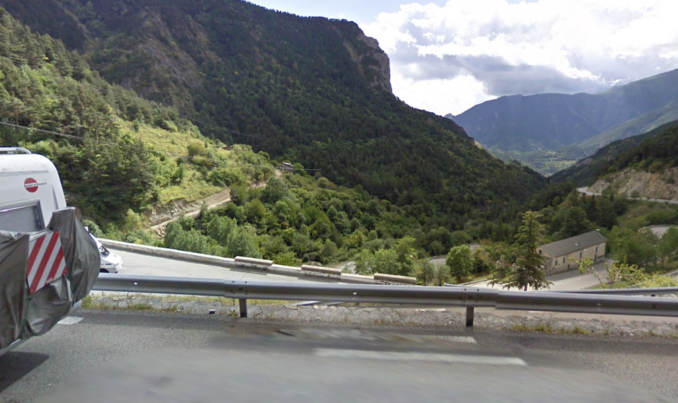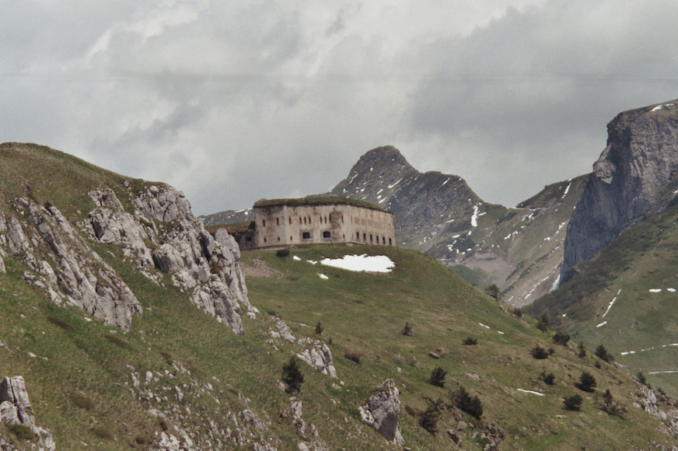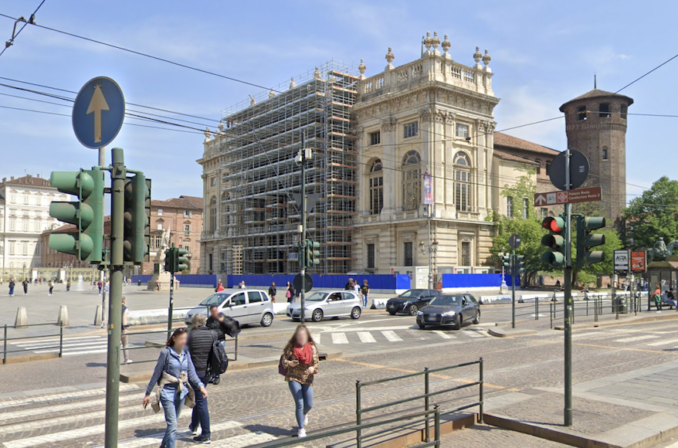Essentially hill and lake people, and having traversed the French and Italian Rivieras during their 1958 Ford Prefect continental road trip, my grandparents headed inland in search of inclines and hairpin bends.
Col de Tende
The Col de Tende is a high mountain pass located in the Alps, close to the France-Italy border. It connects Nice and Tende in Alpes-Maritimes with Cuneo in Piedmont, making it a strategic pass linking Nice in the south to Cuneo and Turin to the north. The pass is traversed by both a road tunnel and a railway tunnel and separates the Maritime Alps from the Ligurian Alps. Historically, it was first developed by the Phoenicians and later maintained by Greeks and Romans. The Tende has a remarkable history as a part of the Via del Sale, a major commercial road dating from Roman times, and as the site of one of the first alpine road tunnels. Today, the pass is a popular destination for cyclists and is listed as one of the highest paved roads in Europe.

© Always Worth Saying 2023, Going Postal
I think I’ve found the exact spot where the above photo was taken. The castellated wall on the left near the hairpin is distinctive. If so, my grandparents likely paused to take a photograph while queueing to go through the Col de Tende Road Tunnel. Queuing because it is a single carriageway with steams of traffic directed alternately to and from Italy.
Inaugurated in 1882, the Col de Tende Road Tunnel is a 1 mile 77 chain road tunnel running under Col de Tende between France and Italy. During my grandparents’ visit and until 1964 it was the longest road tunnel in the Alps. When built in 1882 it was the longest in the world and didn’t lose that crown until 1934 when the honours passed to the two-mile-long Queensway Tunnel between Birkenhead and Liverpool, often referred to as the Mersey Tunnel. The altitude at the French Col De Tende portal is 4,199ft, on the Italian side, 4,334ft.
The tunnel and its access roads were damaged by Storm Alex in October 2020. Judging by Google Maps, it was the victim of a devastating landslide on the French side. Google Maps, therefore, shows an unhelpful construction site at the mouth of the tunnel where my grandparents paused. However, Street View is more useful and allows for picture number two. Queuing traffic intrudes. Rather than stand on the exact spot we’re reduced to being nearby and capturing the feel of the place rather than properly lining up the remaining landmarks. Note the serrated roadside walls, pitched roofs and a road off to the left running along that side of the valley. The river in the dip is the Roya which meets the Mediterranian at Ventimiglia.

© Google Street View 2023, Google
Before the tunnel was built, the pass was traversed via La Ca Canelle which, to be blunt, appears impassable when viewed from satellite photography. Beneath the headline ‘Not For The Faint of Heart’, the Dangerous Roads website describes a gravel road generally in good shape, not too steep and no problem for an ordinary 4×4 vehicle. But,
It’s winding, in some places only wide enough for one vehicle, and in many places bordered by a drop of hundreds of meters (many hundreds of feet) unprotected by guardrails. The road includes some steep sections, without marked central lines, is very narrow, scarcely wide enough for two cars to pass at the same time and there are no protections or guard rails along some parts of the route. This stretch of road should not be attempted by novice drivers.
It certainly won’t be attempted by this humble reviewer of old photographs. On the satellite mapping, I counted a nosebleed inducing 48 hairpins in a straight line assent that would measure 1,000 yards. Dangerous Roads also omit to mention that the route is only accessible in summer.

Tenda Fort Centrale,
Markus Schweiss – Licence CC BY-SA 3.0
At the top sits the bleak Fort Central, part of a defensive system of several forts built around an 1871 Italian plan to secure the Tende Pass and prohibit any advance of French troops. Inaccessible in winter, it was served by a cable car. Once into Italy, these days it is a two-and-a-quarter hour drive to our next destination.
Turin
Turin is a city in Northern Italy and the capital of Piedmont and the Metropolitan City of Turin. It is an important business and cultural centre known for its cars, sports cars and chocolate. Additionally, Turin is home to the Museo Egizio, a museum containing one of the largest collections of Egyptian artefacts outside of Egypt.
In the 1950s, Turin played an important role in the Italian economic miracle. The city’s automotive industry, which included Lancia’s main production plant in San Paolo and Fiat’s at Lingotto, contributed significantly to this transformation. During this period, Italy experienced a wave of modernization and mass migration from rural to urban areas. This led to changing attitudes towards women’s roles, resulting in greater independence and autonomy for women. Bold new fashions reflected this shift.

© Always Worth Saying 2023, Going Postal
The Royal Palace of Turin, also known as the Palazzo Reale di Torino, is a historic palace that was built for the House of Savoy in the 16th century and renovated in the 17th century. It is considered one of the most luxurious historic palaces in the world and is home to the Royal Museums. The palace is located in the heart of Turin, Italy, and features the Palazzo Chiablese and the Chapel of the Holy Shroud. The palace was expanded by Emmanuel Philibert and Victor Amadeus II during their reigns, with the addition of the Daniel Gallery and summer apartments. Visitors can admire the palace’s extensive art collection, armoury, and gardens.
However, despite the caption in our family album, this isn’t it. Pictured above is the Palazzo Madama, a historical palace located in the heart of the city near the Royal Palace. Originally a gate in the Roman walls, it was later expanded into a castle by the Savoia-Acaja family. The palace has served various purposes over the years, including as a royal residence, art gallery, and the seat of the Subalpine Senate. The Baroque façade was designed by architect Filippo Juvarra, although only the front section was completed. Palazzo Madama has been listed as a UNESCO World Heritage Site since 1997, along with 13 other residences of the House of Savoy. Visitors to the palace can enjoy strolling around the historical landmark, taking in the different architectural styles from different eras.
Turin Trams
Also visible, in the middle distance, is a tram. Turin has a long history of trams, with the first line being inaugurated in 1871. Over the years, the network has expanded to comprise 10 lines covering 54 miles, with two light rail lines. Notably, line 7, also known as “circular G,” was inaugurated in 1893 and featured Piazza Statuto as its endpoint.
Tourists can enjoy a unique view of the city while riding the historic tram, which departs every 30 minutes from Piazza Castello. Choosing public transport, such as buses and trams, in Turin is an ideal way to explore the city. These modes of transport run from 5 a.m. until midnight and connect the city’s major tourist attractions.
The Turin tramway network uses different types of rolling stock, including historic trams, and certain sections of the network have been reserved for higher speeds. The Atts, Turin’s Historical Tramways Association, is a non-profit association that is open to private individuals and public institutions.
Reference to the Atts website suggests that the pictured tram is a
2500 series, a fleet of 100 vehicles designed by ATM (Azienda Torinese Mobilità, literally the Turin Mobility Company) and built by Fiat. Based on an American model patented by Peter Witt they were the first large-capacity Turin trams. They are easy to recognise in old photographs due to being single units with a middle door as well as end doors a large circular route identifiers above the cabs.
After the war, the surviving trams were modernised and remained in service to some extent or another until 1983. Three preserved and working examples remain.

© Google Street View 2023, Google
In the modern day, we can stand on the precise spot. Unfortunately, the Madama is being improved and is hidden behind scaffolding. Reassuringly the tram lines and overhead wires remain in place. You can have a look around the area via this link. Street clutter predominates. The modern obsession with stopping people from throwing themselves in front of cars, trucks and trams takes precedence over maintaining an aspect enjoyed for generations by those capable of using their common sense when approaching a road.
© Always Worth Saying 2023



